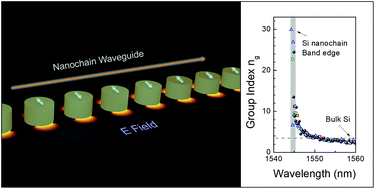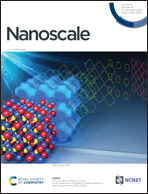Low loss waveguiding and slow light modes in coupled subwavelength silicon Mie resonators†
Abstract
Subwavelength light-guiding optical devices have gained great attention in the photonics community because they provide unique opportunities for miniaturization and functionality of the optical interconnect technology. On the other hand, high-refractive-index dielectric nanoparticles working at their fundamental Mie resonances have recently opened new venues to enhance and control light–matter interactions at the nanoscale while being free from Ohmic losses. Combining the best of both worlds, here we experimentally demonstrate low-loss slow light waveguiding in a chain of coupled silicon Mie resonators at telecommunication wavelengths. This resonant coupling forms waveguide modes with propagation losses comparable to, or even lower than those in a stripe waveguide of the same cross section. Moreover, the nanoparticle waveguide also exhibits slow light behaviour, with group velocities down to 0.03 of the speed of light. These unique properties of coupled silicon Mie resonator waveguides, together with hybrid coupler designs reducing the coupling loss from a bus waveguide, as also shown in this work, may open a path towards their potential applications in integrated photonics for light control in optical and quantum communications or biosensing, to mention some.



 Please wait while we load your content...
Please wait while we load your content...